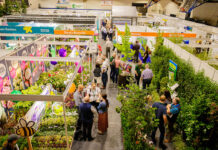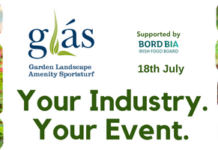I used to wonder why veteren beekeepers always exude a humility about their craft, never claiming to be experts and prepared for the worst but grateful to the bees if they got a crop of honey. I don’t wonder anymore.
Last year was my first year keeping a hive and I was delighted to have 30 jars of honey to keep me and several friends aswell as a few hay fever sufferers happy over the Winter with supplies of Balbriggan honey. This Summer, however, the hives did not thrive. Having a three year old queen in one hive and an ‘invisible’ queen in the other was less than ideal, one could say.
About a month ago, John Killeen, a well respected beekeeper with the County Dublin Beekeepers organised for me to collect a new nucleus colony of bees with a new unmarked queen. To free up a brood box for the new colony, I united the two ailing colonies in the one brood box, sterilised it all and scorched with a blow torch all the nooks and crannies of the empty box. With the help of local beekeeper John, we introduced the new colony to their new Balbriggan home. It is great to have a vibrant full colony again giving my friend’s orchard the appearance of a busy bee airport, with departures and arrivals criss-crossing all the time during daylight hours.
The bees are striving to build up sufficient honey stores to get them through winter. When the temperature outside drops below 10 degrees C, they will start to cluster inside the hive to keep warm. With no foraging in cold weather, the bees depend on the collected stores of honey for food until the warmer Spring temperatures return. My job is to help this new colony to survive by feeding sugar syrup now and treating the hive with Apiguard, a natural slow release gel containing thymol, which will hopefully kill any varroa mites present in the hive. The varroa mite is a major reason why wild honeybees have been largely wiped out.
Ben Harden, the well known beekeeping supplier in Arklow, sent me by post a feeding tray which sits on top of the brood box. I have one for each hive. To make sugar syrup, I buy 4 kilos of white sugar at a go, mix this with 2 litres of boiling water, and bring it in two 2litre washed out milk containers to the apiary. I am sure people must wonder what I am at when they see the vast amounts of sugar in my shopping basket! To date I have given the new hive 12 litres of syrup and they have taken down into the hive everything I have given them so far. I must make more tomorrow.
I also ordered from Ben the Apiguard treatments. They come in small metal trays with a foil seal. A spacer called an eke is placed on top of the brood box. This means the apiguard tray is not squashed when placed on top of the frames where the bees are working to build up their stores. In a fortnight another tray of Apiguard will be inserted to complete the treatment before the activity levels in the hive drop off as the weather gets colder.
One year on I have learned important lessons about beekeeping. The critical one is to keep regular and useful records of dates, bee observations, measures taken and requirements for the next visit toi the hives. I owe huge thanks to Milo and John in Malahide and Jim in Mullingar for the mentoring. There is always next year to look forward to, I hope the bees feel the same way!
Source: Trevors Kitchen Garden – Feeding the Bees and Treating Hive to Prevent Mites







